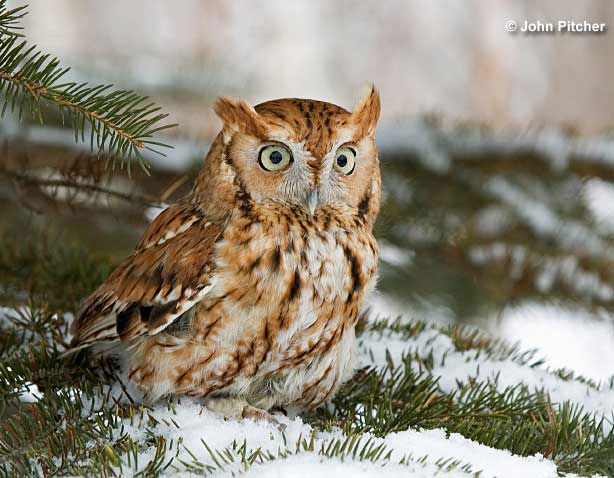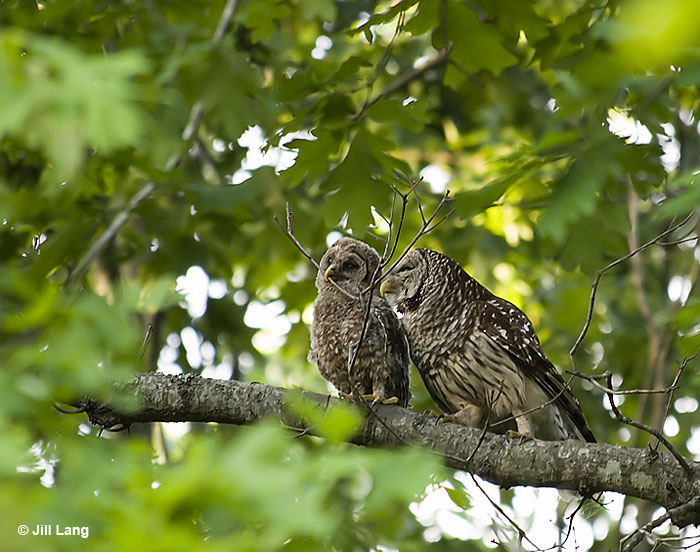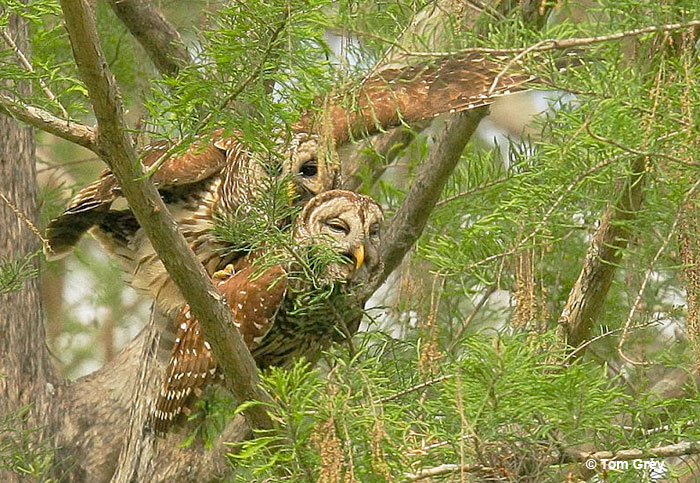
Owls are beautiful animals that are associated with a wide variety of things, some good, some bad. These incredible birds can rotate their necks, at most, 270 degrees and are exceptional hunters. In addition, they make a unique hooting sound that most of us can place immediately.
But why do owls hoot? Are they just communicating, or is it something more?
Keep reading to discover why exactly owls hoot, other kinds of sounds they make, and more!
On this page
Why Owls Hoot?
Owls hoot for a variety of reasons. However, the hoots are for communicating, and owls can produce different kinds of hoots to relay different messages. Typically, when you hear an owl hooting, they’re:
- In the presence of a predator
- Fending off possible intruders
- Declaring their territory
- Announcing that they’re ready to find a mate
- Conversing with their mate
For some owl species, hooting can have individual variations. This is like how people have distinct voices.
Because of these unique vocalizations, owls can differentiate between neighbors and strangers. These birds are usually more aggressive to owls they don’t recognize.

Different Kinds of Hoots
Now that we know every owl hoot can mean something separate, there are specific things you can listen for to separate why an owl may be hooting.
Territorial disputes are one of the most common reasons why owls hoot. A lot of owls do this to send a message to other owls to let them know that they’re in claimed territory.
Depending on the species, there’s a lot of variation in these hoots, but it’s safe to assume that if you hear hooting at night, it’s most likely to announce their territory. Owls don’t make their own nests during breeding season.
Related: What Is A Group Of Owls Called?
Instead, they find an old or abandoned nest and claim it. Once they find one, they’ll start hooting to let everyone nearby know that this is now their territory and everyone needs to stay away. Additionally, these calls help attract females when courtship season begins.
Defense hoots are rarer. Sometimes, they’re never heard in certain places.
Additionally, owls will hoot when facing a predator. For example, the owl might let out a loud shrieking, screeching sound or attack until the predator leaves the owl’s nest or has been defeated.
Defense hoots are more common in areas where raptors have overlapping habitats. For example, if a smaller owl were to nest close to a larger owl.

Owl Calls & Other Kinds of Sounds
Other sounds owls make are screaming and screeching. These sounds are similar to the hoots mates’ exchanges of back and forth because some owls will communicate with screeches and screaming instead of hooting.
The rarest sound is probably the hoot. This sound is produced when an owl gets spooked. If an owl were to spot someone or something out of the ordinary in its territory and think it’s a threat, it would start to let out a lower-pitched barking noise.
If an owl is feeling threatened or surprised, it can make a less intense noise in order to scare off any threats that may be lurking close by.
It’s not as serious as an actual predator attack, which is why they make quieter sounds, but this situation can definitely cause an owl to vocalize.
Owls can shriek, whistle, and growl when needed. They mostly growl at predators when they feel threatened. This can sound shorter and lower-pitched than a lot of other sounds these birds make.
Learn more: Owl Symbolism & Meaning
Frequently Asked Questions
What does it mean when you hear an owl hooting?
Hearing an owl hoot can mean one thing in a particular culture and something else in another. So, for example, if you’re a spiritual person, the owl could be trying to tell you that you need to pay more attention to what’s going on in your life or that you need to let go of anything that’s holding you back in life.
In Native American Culture, owls are believed to be bad omens. Since they’re active at night, they’re associated with mischief, the supernatural, and even death. Additionally, their hoots are commonly associated with misfortune, evil spirits, and ghosts.
In Hinduism, owls are associated with the goddess of wealth, so they’re seen in a different light. Hearing an owl hoot is a good omen and signals good luck and immense wealth is coming.
In Ancient Greece, owls were connected to Athena, who is the goddess of wisdom. Because of this, they were seen as holy birds. Owls would be unleashed right before a battle to make sure they were victorious. An owl’s hoot was seen as an omen of good fortune, guidance, and protection.
Why do owls hoot at night?
The main reason owls hoot at night is for a territorial claim. They do this to notify intruders that they are in the owl’s territory. Owls are mainly noctural creatures, but their active times include dawn and sunset.
Can you hear owls hooting during the daytime?
Owls mostly hoot during the night, so it’s unlikely to hear a hooting owl during the day. But still, some species can become diurnal during darker times of year (such as Snowy Owls).
How far away can you hear an owl hoot?
Most owl hoots can be heard from a quarter mile away. However, the Great Horned Owls‘ call can be heard miles away if the night is still.
Do owls hoot when they are hunting?
Owls are majestic birds of prey, capturing anything from mice to skunks and rabbits, but they are usually silent during these hunting trips. However, if they spot a larger predator, they might give some hoo-hoo calls.
Conclusion
Owls hoot for a wide variety of reasons, but it’s all for communications. They use different parts of their vocal range to share different messages. From attracting a mate to defending their territory, owls use their sounds to survive in the wild.
Other than the traditional hooting we associate with these birds, they also make various other sounds, including chirps, barks, screeches, and screams.
When you hear an owl hooting, it’s easy to feel spooked, but every time you see them is not a bad omen. Enjoy these beautiful birds, and be sure to observe them closely. They may even have a message for you!
Read next: Owl identification

